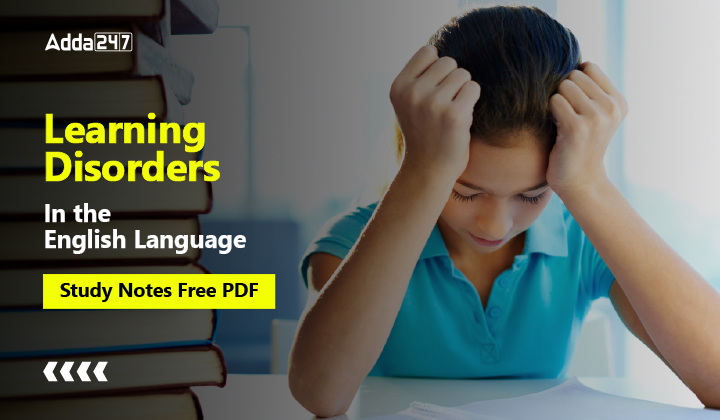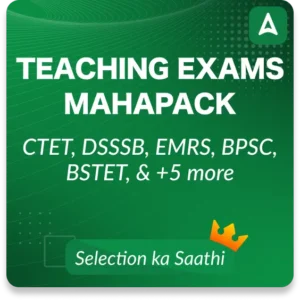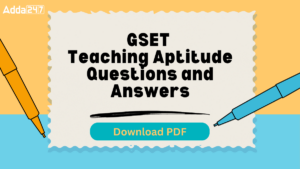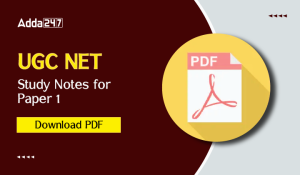Table of Contents
In many teaching exams including CTET and other State TETs etc. include a mandatory section where candidates have to answer 15 questions of English content and 15 questions on English Pedagogy in CTET and other State TET Exams. English Pedagogy is one of the interesting and scoring topics under the English Language sections of teaching exams. In this article, we are providing you with few topics of English pedagogy.
Learning Disorder in English Language
Learning disorders can affect various aspects of a person’s academic performance, and language-specific learning disorders can significantly impact an individual’s ability to learn and use English effectively. These disorders, also known as Specific Learning Disorders (SLDs), can manifest in difficulties with reading, writing, and language comprehension. In the context of the English language, such disorders can lead to challenges in spelling, grammar, reading comprehension, and verbal expression.
Learning Disabilities
Some students have unique challenges that make learning in a traditional classroom difficult. e.g. visual or hearing impairments, attention deficit disorder, handicapped, chronic illnesses etc. Learning disorders that are most conspicuous usually revolve around reading, writing or calculations.
I. Dyslexia
It is a learning disability in reading. Basic reading problems occur when there is difficulty in understanding the relationship between sounds, letters and words. Reading comprehension problems occur when there is inability to grasp the meaning of words, phrases and paragraphs.
II. Learning Disabilities in Maths (Dyscalculia)
Learning disabilities in Maths vary greatly depending on the child’s other strengths and weaknesses. A child’s ability to do Maths will be affected by language learning disability or a visual disorder or difficulty with sequencing, memory or organization.
III. Dysgraphia
Learning disabilities in writing can involve the physical act of writing or the mental activity of comprehending and synthesizing information. Basic writing disorder refers to physical difficulty forming words and letters. Expressive writing disabilities indicate a struggle to organize thoughts on paper.
IV. Dyspraxia
This type of disability refers to problems with movement and coordination in cutting, writing or gross motor skills such as running or jumping. A motor disability is sometimes referred to as ‘output’ activity meaning that it is related to the output of information from the brain in order to run, jump, write or cut something, the brain must be able to communicate with the necessary limbs to complete the action.
V. Aphasia/Dysphasia
Language and communication learning disabilities involve the ability to understand or produce spoken language. Language is also considered an output activity because it requires organizing thoughts in the brain and calling upon the right words to verbally explain something or communicate with someone else.
Signs of language based learning disorder involve problems with verbal language skills, such as ability to retell a story and the fluency of speech as well as the ability to understand the meaning of words, parts of speech, directions etc.
VI. Auditory Processing Disorder
An inability to distinguish subtle differences in sound or hearing sounds at the wrong speed make it difficult to relate to words and understand the basic concepts of reading and writing.
VII. Visual Processing Disorder
Problems in visual perception include missing minor differences in shapes, reversing letters or numbers, skipping words, skipping lines and having problems in eye-hand co-ordination. Visual perception can affect gross and fine motor skills, reading comprehension and maths.
Note: Difficulty in school doesn’t always stem from a learning disability. Anxiety, depression, stressful events, emotional trauma make learning more of a challenge. In addition, ADHD and AUTISM sometimes co-occur or are confused with learning disabilities.
A. ADHD (Attention Deficiency Hyperactivity Disorder)
Attention Deficiency Hyperactivity Disorder (ADHD) is not actually a learning disability but it can hamper or disrupt learning. Children with ADHD often have problems sitting still, staying focused, following instructions etc.
B. AUTISM
Difficulty in mastering certain academic skills can be due to developmental disorders such as Autism and Asperger’s syndrome. Children with autism may have trouble in communicating, reading body language, learning basic skills, making friends and making eye-contact.




 GSET Teaching Aptitude Questions and Ans...
GSET Teaching Aptitude Questions and Ans...
 समुद्र का पर्य�...
समुद्र का पर्य�...
 UGC NET Study Notes for Paper 1, Downloa...
UGC NET Study Notes for Paper 1, Downloa...












